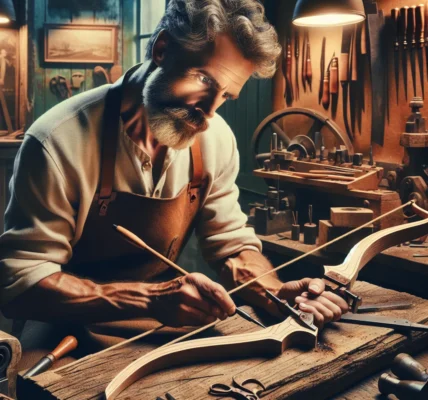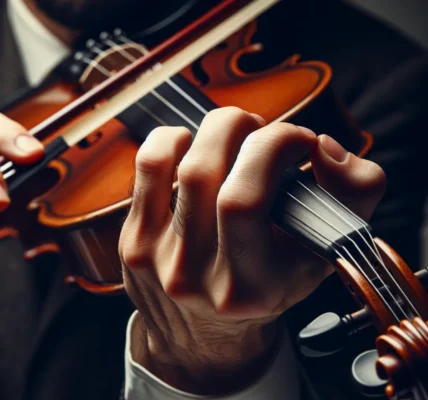The History of Bow Making: An Ancient Craft
The art of bow making is a tradition that stretches back through the annals of history, with its roots embedded in ancient civilizations. The history of bow making is a testament to human innovation and craftsmanship, dating back to the earliest records of human civilization. From the mighty composite bows of the Mongol warriors to the elegant longbows of medieval Europe, the art of bow making has evolved and adapted to suit the needs of different cultures and time periods.
Archaeological evidence suggests that bow making dates back to at least 9,000 years ago, with the earliest known composite bows found in Egypt and Mesopotamia. These early bows were constructed from a combination of materials such as wood, horn, and sinew, showcasing the innovative techniques of ancient craftsmen.
Throughout history, bow making has played a pivotal role in warfare, hunting, and sport. The design and construction of bows have varied widely across different cultures, with each civilization adding its own unique twist to the craft. For example, the Japanese yumi bow is characterized by its asymmetrical shape and long, elegant curves, reflecting the aesthetics and traditions of Japanese archery.
As the centuries passed, innovations in materials and techniques revolutionized the art of bow making. The introduction of laminated bows, recurve bows, and, more recently, compound bows, has pushed the boundaries of what is possible in terms of power, accuracy, and precision. Despite these advancements, traditional bow making techniques are still cherished and practiced by enthusiasts and craftsmen around the world.
From its humble beginnings in ancient civilizations to the cutting-edge innovations of today, the history of bow making is a rich tapestry of tradition and innovation. The craft continues to thrive, weaving its way through the fabric of human history and leaving an indelible mark on cultures across the globe.
Mastering the Art: Techniques and Skills
Mastering the art of bow making involves the intricate understanding of traditional techniques and the innovative application of modern skills. The craft of bow making is built upon a foundation of time-honored methods, requiring a deep knowledge of wood selection, shaping, and finishing. Traditional techniques, such as hand-planing and heat bending, are central to creating a well-crafted bow, while modern innovations, including computer-aided design and precision machinery, have expanded the possibilities of bow making.
To master the art of bow making, one must possess a keen eye for detail and precision. The process of shaping the bow stave demands an understanding of wood grain and flexibility, as well as a mastery of woodworking tools. Additionally, the art of tillering, the process of testing and adjusting the draw of the bow, requires both technical expertise and a nuanced understanding of the bow’s performance.
Furthermore, mastering the art of bow making entails a deep appreciation for the cultural and historical significance of the craft. Drawing inspiration from traditional bow designs and techniques, while incorporating contemporary innovations, is essential to creating bows that honor the legacy of the craft while pushing its boundaries.
In conclusion, mastering the art of bow making demands a harmonious blend of traditional techniques and modern skills, as well as a profound respect for the heritage of the craft. By combining the wisdom of the past with the ingenuity of the present, bow makers can create exceptional pieces that embody both tradition and innovation.
Modern Innovations in Bow Making
Modern innovations in bow making have revolutionized the traditional craft, blending centuries-old techniques with cutting-edge technology to create high-performance bows that meet the demands of modern archers. One of the key innovations in bow making is the use of advanced materials such as carbon fiber, which provides a perfect combination of strength, flexibility, and light weight. This allows bow makers to design bows that are not only powerful but also highly durable and resistant to warping.
Another significant innovation is the incorporation of precision engineering and computer-aided design (CAD) in the bow making process. This enables bow makers to fine-tune the design and geometry of the bows, resulting in improved accuracy, speed, and stability. Furthermore, the use of CNC machining technology allows for the creation of complex bow riser designs and intricate limb shapes that were previously impossible to achieve through traditional methods.
Additionally, advancements in bowstring materials and construction have greatly enhanced the performance of modern bows. High-quality synthetic materials such as Dyneema and Spectra offer superior strength and minimal stretch, resulting in faster arrow speeds and reduced vibration. Moreover, specialized bowstring manufacturing techniques, such as pre-stretching and serving, contribute to consistent performance and reliability in various weather conditions.
Furthermore, the integration of ergonomics and customizability in modern bow design has led to the development of adjustable grips, modular accessories, and personalized tuning options. This allows archers to optimize their equipment to suit their individual shooting style and preferences, ultimately improving their overall shooting experience and performance.
In conclusion, the art of bow making continues to evolve through modern innovations, bringing together traditional craftsmanship and state-of-the-art technologies to create bows that embody both the rich heritage of the craft and the high standards of contemporary archery.
The Artistry of Bow Design
The art of bow making is a tradition that combines craftsmanship and innovation to create exquisite pieces of art. One of the most fascinating aspects of this craft is the artistry of bow design. The design of a bow is not only crucial for its functionality but also contributes to its aesthetic appeal. Traditional bow designs have been passed down through generations, each one carrying the unique characteristics of its cultural origins.
With the advancement of technology, innovative bow designs have emerged, incorporating modern materials and techniques while still respecting the traditional principles of bow making. The artistry of bow design now encompasses a wide range of styles, from the classic elegance of longbows to the sleek and ergonomic forms of modern compound bows.
The careful consideration of factors such as draw weight, draw length, and overall geometry defines the artistry of bow design. Bow makers meticulously shape and sculpt each component to achieve the perfect balance of form and function, resulting in a bow that not only performs flawlessly but also captivates with its visual appeal.
Whether adhering to time-honored traditions or pushing the boundaries of innovation, the artistry of bow design remains at the core of this ancient craft, ensuring that every bow created is a masterpiece of both beauty and precision.


